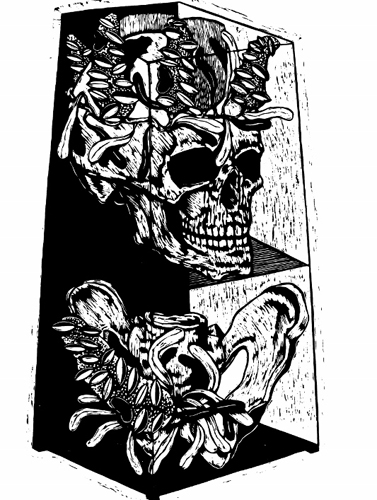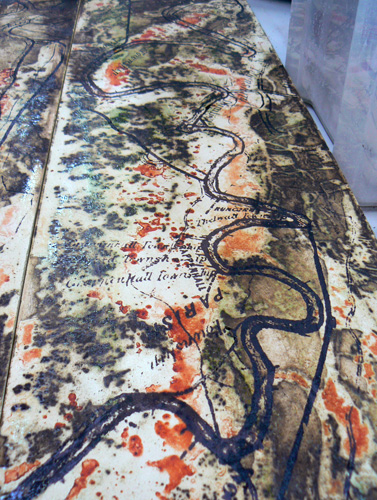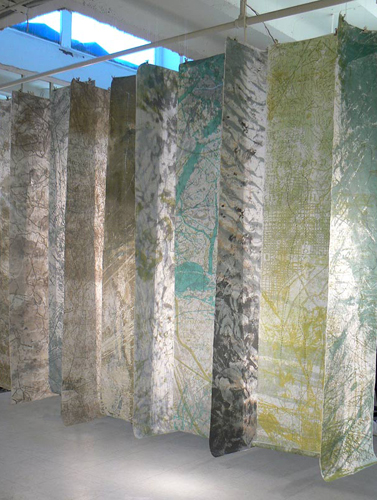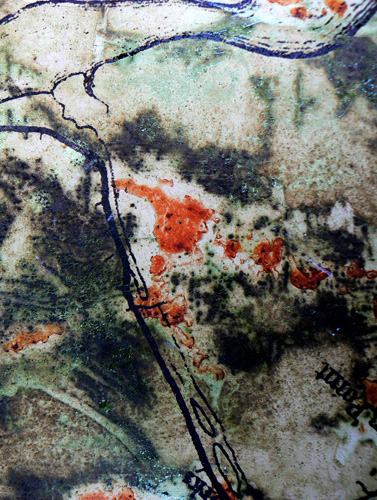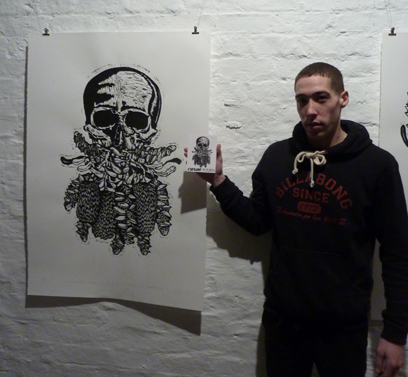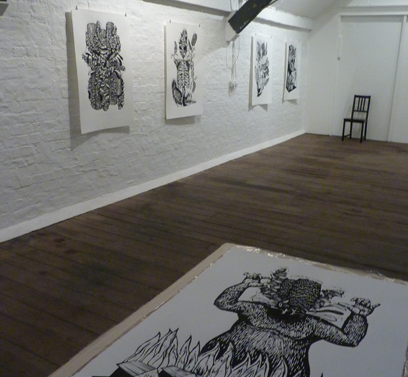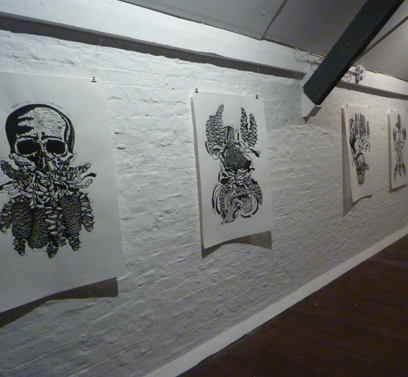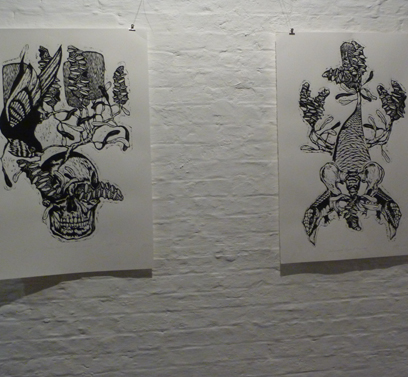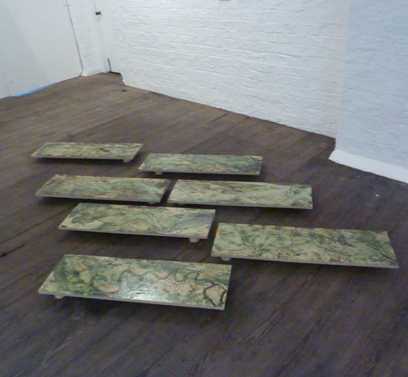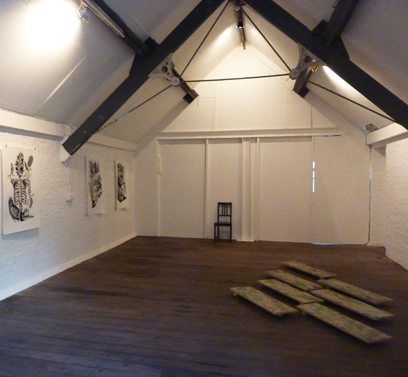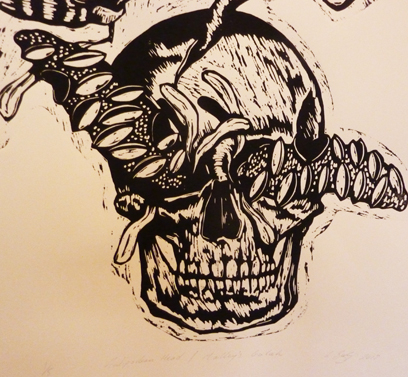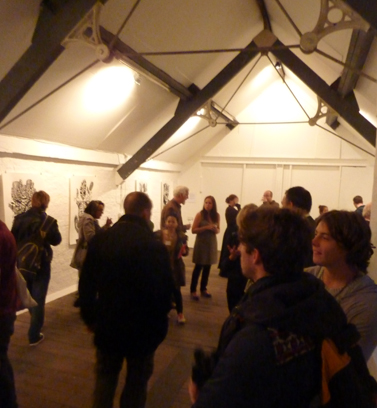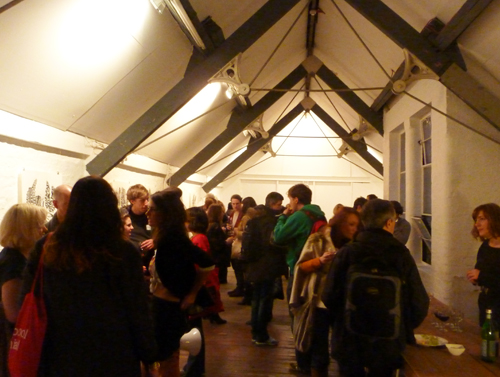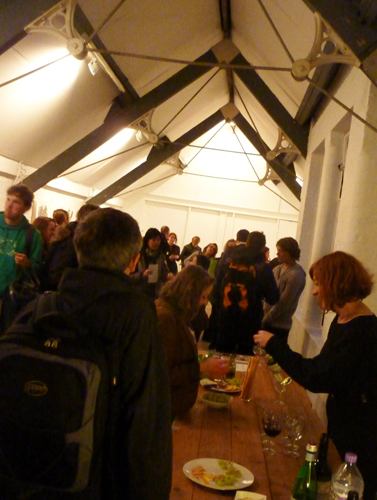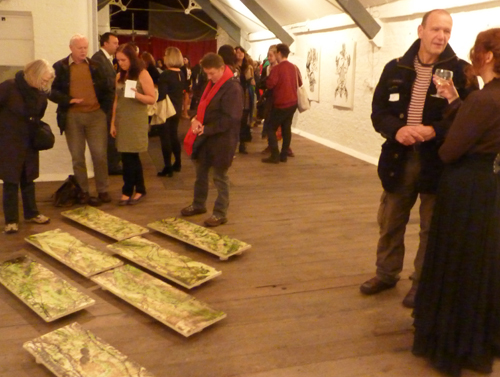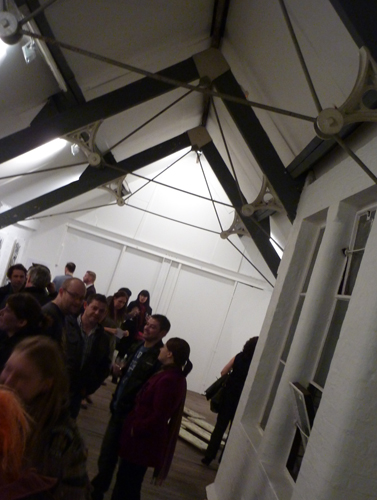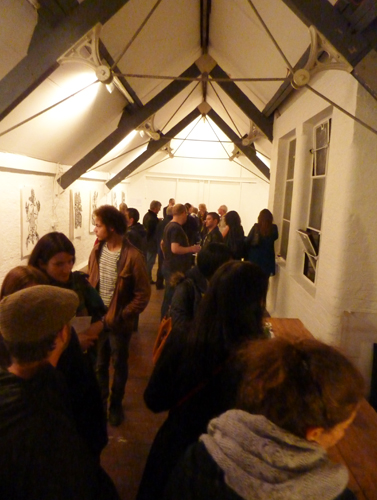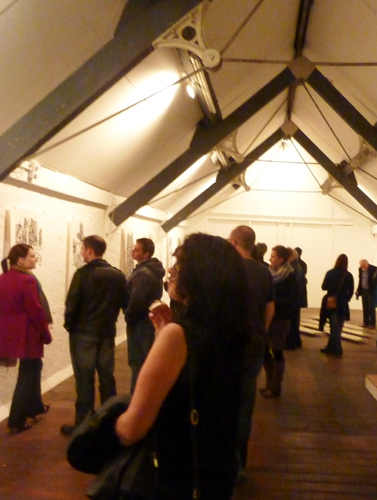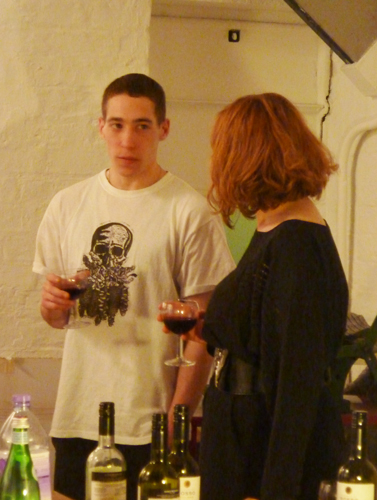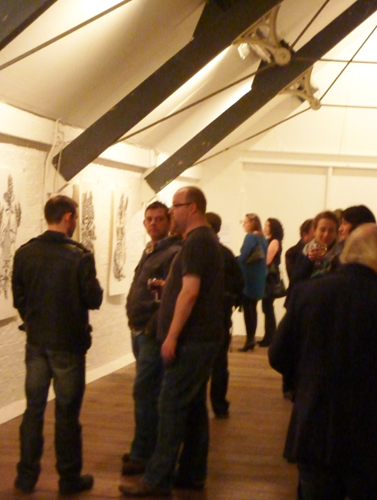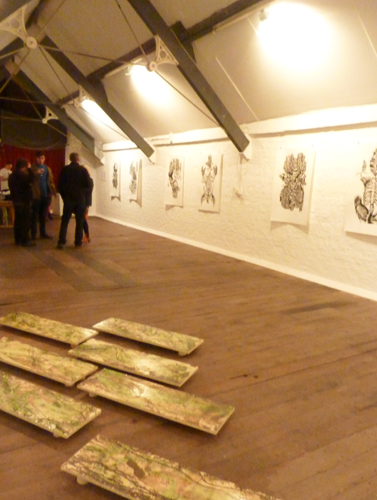Diverse associations arise from Australian artist Luke Beezley’s exploration of foliated skeletal forms. A surrealists game is played out amid the cultural iconography of Banksia, birds, lizards and bones of a vast and brutal Australian landscape. Issues of cultural identity are addressed that reference a questionable colonial legacy and the impact of the modernist artist Nolan and Tucker on the Australian psyche. The prints borrow from B-grade movie posters composition, as monsters emerge from dichotomies of black and white to dwell in the backyard ethos of suburbia.
In this current series of work designs are self-contained disregarding the confines of the page for iconographic forms. The large plates are cut from masonite, a composite material that is grainless, with a greater restrictive quality than lino. Marks are controlled yet there is a rawness to the technique, nothing is perfect with random fragments of cuts left as part of the image. Negative line, a necessary evil, is kept to a minimum while pattern is used to denote form.
This exhibition of large scale wood cut prints for Curve Gallery UK by Australian based artist Luke Beezley will be his first exhibition outside of Australia. He has exhibited widely in Australia including a solo exhibition at John Paynter Gallery (1999); Steel Works at Maitland Regional Art Gallery (1998); Go Figure at Newcastle Regional Art Gallery (1996); Art under Construction at Lake Macquarie Art Gallery (1994); Precious Little at Pod Space Newcastle (2008) and Chance Meeting at Art Systems Gallery Wickham (2012). He lives and works in Newcastle, Australia.
Maere PANELS: Tracy Hill
This new experimental body of work from Tracy Hill is part of her developing research investigating new technologies in print. For this particular body of work the collaborative partnerships between Hill, Alasdair Bremnar and David Binns who head the Silicate Research Unit at UCLan have lead to a unique opportunity of combining contemporary ceramics and fine art print. It is Hill’s intention to examine the new opportunities these alternatives offer expanding the language and boundaries of printmaking. The process of printing in her work responds directly to the nature of layering and of building surfaces which resonates with the years of history and palimpsest within our landscape.
By building surfaces and layers through the printing of oxides and glazes onto cast commercial concrete the pieces resonate with the hidden geological structure and history of the land. In these installations the physical presence of the pieces combine with the multi-layered surface to challenge the ideas of the conventional print. By encompassing the use of new technologies and methods it is possible to communicate ideas which exceed the boundaries of traditional print.

